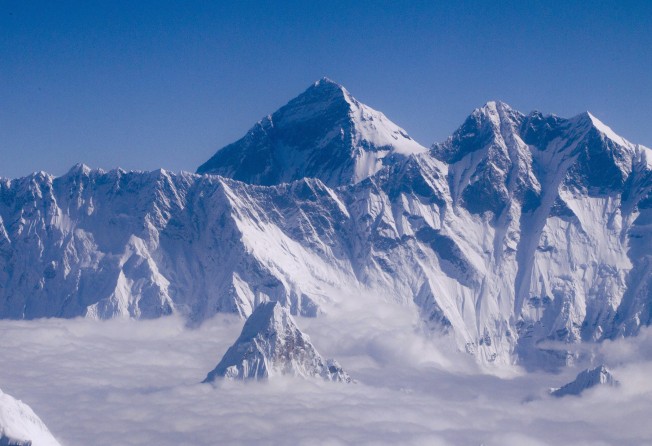Measuring Everest helps to take relationship to new heights
- China and Nepal settling their row about the height of the world’s tallest mountain shows that diplomatic relations are on solid ground and comes as links between the neighbours continue to grow

The height of the world’s tallest mountain, Everest, is a matter of science and geography. But for China and Nepal, with the peak straddling their border, it is also about geopolitics. Both agreed during President Xi Jinping’s visit to Kathmandu in October last year to send separate teams to the top to end a dispute over how high it is.
The joint announcement by their foreign ministers that from base to summit it measures 8,846.86 metres settles the row and shows diplomatic relations are on solid ground.
China had said the mountain, which it refers to by the Tibetan name Qomolangma, was four metres shorter than that claimed by Nepal, which calls it Sagarmatha. The difference was due to the Nepali calculation including the peak’s snow cap, while that of the Chinese only went to the summit’s rock base.
After the results from the twin surveys using the latest technology were compared and a method for measurement agreed, a new figure that raises the previous estimate by 86 centimetres has been confirmed. The cooperation is reason for Xi to contend in his congratulatory message to his counterpart, Bidya Devi Bhandari, that what most of the world has named Everest should be known by the neighbours as the “China-Nepal Friendship Peak”.
There is much meaning in such a name. Xi spoke of the increasing extent of relations and that Beijing was eager to cooperate in conservation and research of the Himalayan region. But Nepal, although being geographically and culturally closer to Chinese rival India through being connected by a plain rather than a steep mountain range, is steadily moving into Beijing’s sphere of influence.
Unlike Delhi, Kathmandu has signed on to Xi’s belt and road infrastructure and development scheme and trade, transport links, official exchanges and military support are expanding.
China and Nepal have communist governments, which gives them common political understanding. But they also have disputes, the biggest being the 20,000 Tibetan refugees living in Nepal, 9,000 in Kathmandu, and that the country is a route for Tibetans fleeing to India. But Nepali leaders are less tolerant of anti-Chinese protests than India and more welcoming of China’s infrastructure, technology, visitors and aid.
Occasional Indian blockades of goods and energy supplies are also reason for Nepal to look beyond the Himalayas and think not of a barrier, but friendship.
China is building a rail line to the Nepali border that is expected to be finished in 2024. But although there is uncertainty whether there will be a connection to Kathmandu, other links are fast developing and they are bringing more goods, people and understanding. Cooperating on measuring Everest is a symbolic, but important, development. It will help take relations to new heights.